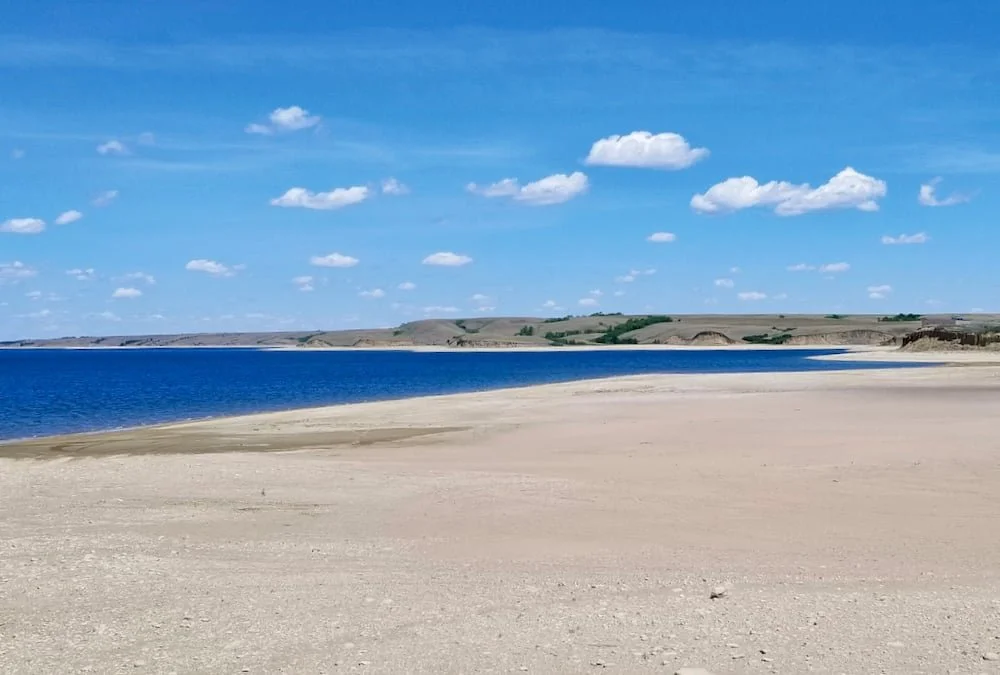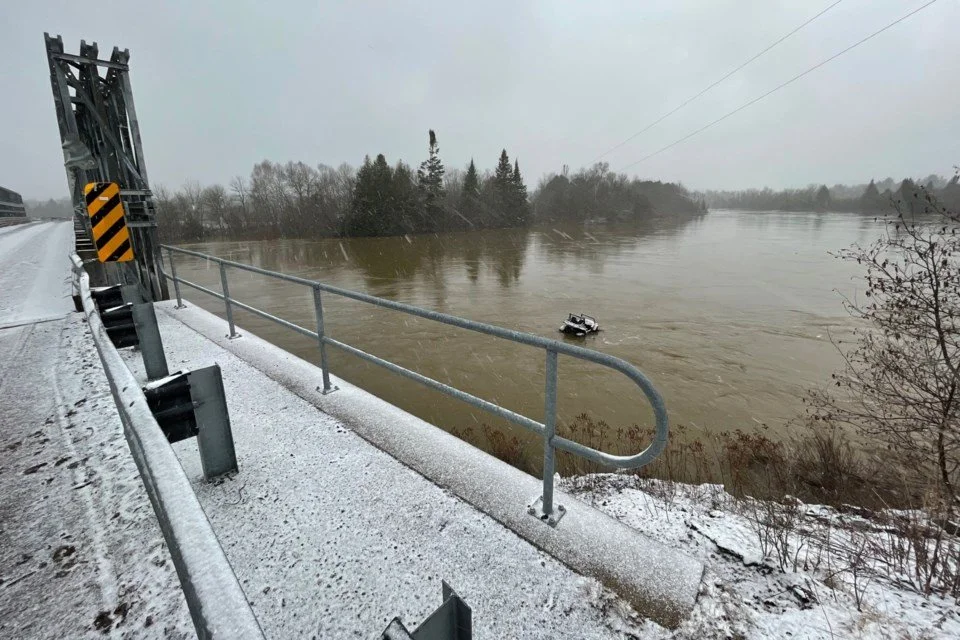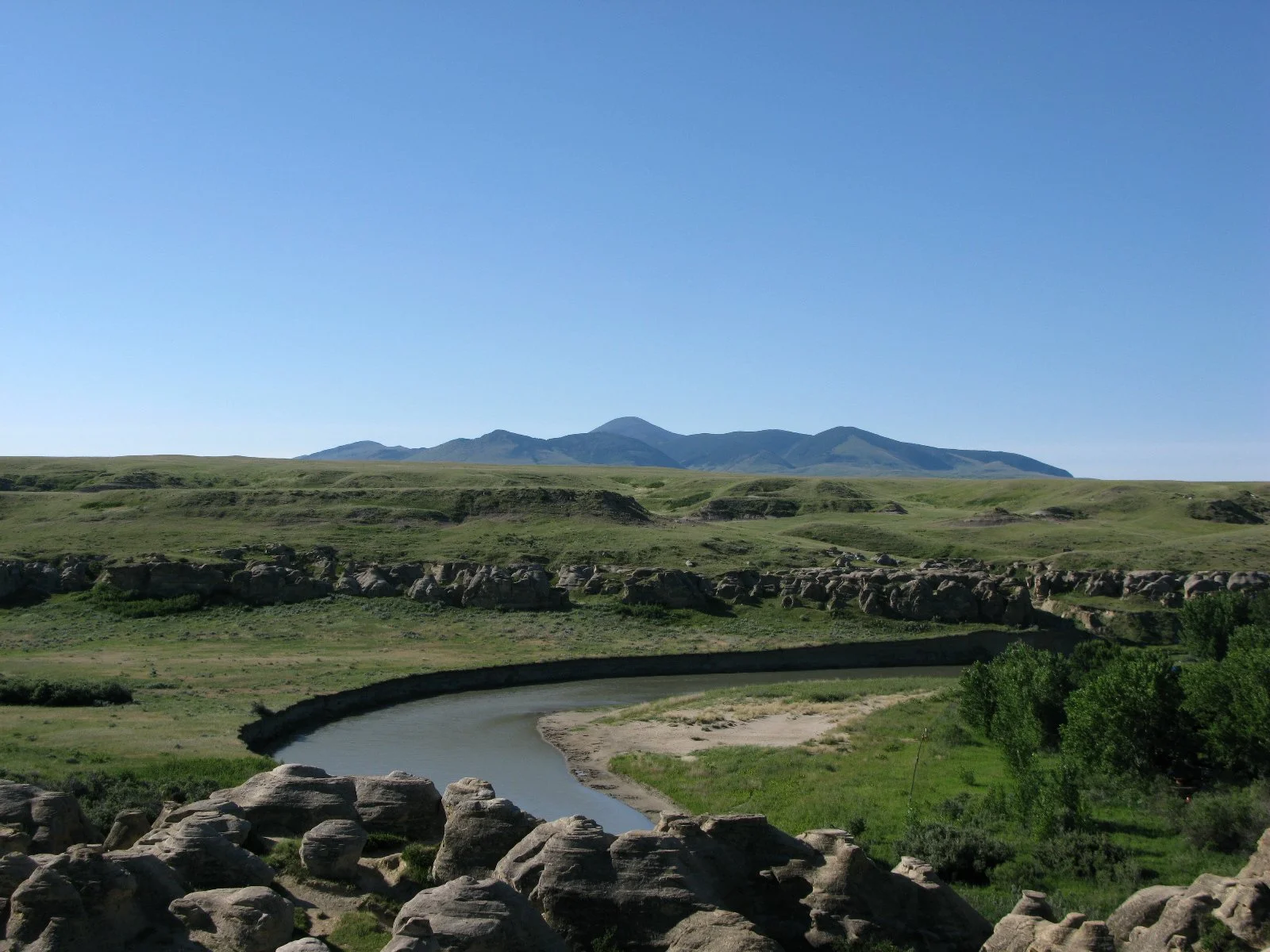So-called “forever” chemicals are being consumed by people on a daily basis from a variety of ordinary materials, revealed a new report. In a study published in Environmental Science and Technology, researchers from the University of Toronto, Indiana University and the University of Notre Dame examined 42 different types of food packaging samples and found the presence of pre-and polyfluoroalkyl substances (PFAS), also known as “forever chemicals” in 55 per cent of the samples taken.
Are the reservoir dog days ending?
In 1967, when the Gardiner Dam backed up the South Saskatchewan River to create the 200-km-long Lake Diefenbaker in the middle of Saskatchewan, the plan was to irrigate 500,000 parched acres. To this day, the giant T-shaped lake — named after Saskatchewan politician and Canada’s 13th Prime Minister, John George Diefenbaker — irrigates only 100,000 to 150,000 acres. “The Dief” is, one might say, an untapped resource, a ’60s-era feat of engineering stuck in vaporization mode. (It is said the lake loses more water to evaporation each year than it gives up for crop watering.)
Ashbridges Bay Water Treatment Plant upgrades move closer to the finish line
It’s been a busy few years at the Ashbridges Bay Treatment Plant (ABTP) where the outfall is being upgraded to better handle storm surges and population growth demands, but the end is in sight. The ABTP is the second largest plant of its kind in Canada and one of the oldest, dating back to 1917 with the outfall constructed in 1947. It is one of Toronto’s four water treatment plants. The scope of the work is complex and extensive, adding a new outflow pipe to take discharge further into Lake Ontario after treatment by a new ultra-violet sanitization system.
Alberta regulator reconsiders Fort Hills oilsands approval after critical report
The plan proposes a complicated set of wells and pumps to control and monitor water levels and chemistry. But its centrepiece is a wall, nearly 14 kilometres long and between 20 and 70 metres deep, which is intended to protect the unmined wetland while the rest is drained and excavated. “It is untested,” said Lorna Harris, an ecologist specializing in peat with the Wildlife Conservation Society, who has worked at universities in Canada and England. “We do not have any certainty that it will work.”
Spring melt threatens to overwhelm tailings storage pits at Minto Mine, Yukon gov't says
The Yukon government is directing the owners of the Minto Mine to brace for a heavy spring melt, and to take some needed measures now to avoid a tailings pond spill into the environment. The territory is experiencing its fourth consecutive year of above-average snow pack, and that's raised concerns about whether the melt might overwhelm the mine's water storage capacity. The mine site is about 40 kilometres from the community of Pelly Crossing, Yukon.
Cloud seeding catching on amid Rocky Mountain drought
Lately, business is up. Amid two decades of drought, cloud seeding — using airplanes or ground equipment to waft rain-and-snow-making particles into clouds — is on the rise in the Rockies. Colorado has added three new programs in the last five years. Wyoming, which began seeding in 2014, added an aerial program in 2018. Utah has steadily increased its fleet of cloud seeding equipment, and the state legislature just approved record funding to further expand programs and research.
Concordia researchers fight shallow lake algae blooms with floating filtration technique
Climate change and human activity have been putting pressure on water bodies worldwide, and Canada’s vast network of lakes is no exception. Over the past decades, increasing nutrient levels have led to a process called eutrophication, in the shallow lakes dotting Quebec’s Laurentian region north of Montreal. These changes have led to a surge in algae blooms, rendering the lakes unusable and possibly disrupting the natural ecosystem.
University of Lethbridge researchers receive funding for potato-focused projects
Researchers at the University of Lethbridge (U of L) have received funding for new work focused on potatoes. Through the Agriculture Funding Consortium, the U of L researchers are getting nearly $250,000 to improve sustainable potato production. They will do this by looking at ways to reduce disease in the field and in storage, and to increase production while minimizing the use of resources.
EARTH DAY 2023: How to reduce your environmental footprint and save money at home
To use less water, try low-flow fixtures like toilets and shower heads. If you’re still using a conventional storage tank water heater, you might want to consider switching to a tankless water heater. “Everybody’s pretty familiar with the typical storage tank water heaters that keep 40 or 60 gallons of water hot 24/7,” Donahue noted. With a tankless water heater, sometimes called an ‘on-demand’ water heater, water is heated only when it’s needed, when a tap is turned or a dishwasher or washing machine is running.
How solar-powered technology could enhance rainwater harvesting in Mexico
Research from a U of T Engineering team could help support household access to safe drinking water in low and middle-income communities by adopting solar-powered ultraviolet (UV) LED illumination to treat water in Mexico’s rainwater harvesting systems. The team includes Mistelle Haughton (CivMin MASc candidate), Karlye Wong (CivMin PhD candidate) and Professor Ron Hofmann (CivMin). Together, they are among a handful of researchers focusing on the benefits of UV LEDs for water harvesting systems.
Canada And Saskatchewan Invest In 21 Infrastructure Projects To Build Stronger Communities
The Resort Village of Cochin is receiving funding for the rehabilitation of their breakwater, a structure that protects against erosion, maintains fish spawning area, and allows for free movement of water between lake systems. It also provides a scenic community-centred area for public gathering and fishing. Once completed, these improvements will rehabilitate the existing breakwater.
Goulais River water levels begin to fall: Hydrometric data
Residents in Goulais have taken to social media to share photos of this week’s significant flooding that has taken place in the area. Warmer weekend temperatures and some rainfall to start the work week has melted much of the remaining snow, leaving some roadways in the Goulais area inaccessible. According to the Government of Canada’s hydrometric data research, the latest water level measurements taken from Goulais River near Kirby’s Corner appear to have peaked today and those numbers are slowly beginning to fall.
‘Flood watch’ continues for Brighton, Trent Hills
Lower Trent Conservation (LTC) says a “flood watch” remains in effect through to Wednesday, April 19 for areas including the municipalities of Brighton and Trent Hills. A flood watch is issued when there is a potential for flooding to occur in low-lying areas. Nuisance or minor flooding of access roads, backyards, basements, et cetera, is anticipated. LTC said buildings and people are not at risk. The flood watch involves the Trent River from Hastings to Trenton.
Officials working to update century-old river water treaty
An update to the process of updating a 100-year-old water treaty on the Milk and St. Mary’s rivers will be given in early May, officials have announced. Two years ago the International St. Mary and Milk Rivers Study Board began reviewing the Canada-U.S. Agreement, which has been in place since 1921. It aims to update the pact, look at options to “improve access to apportionment,” and mitigate the potential effect of climate change on water supply.
Nearly 6 million litres of water from oilsands sediment pond released into Athabasca River
Suncor has reported six million litres of water that exceed sediment guidelines have been released into the Athabasca River from a pond at its Fort Hills oilsands mine. "Suncor took action to stop the discharge system and the release has been stopped," said a note from the Alberta Energy Regulator sent to area First Nations on Monday. The note said the water is from a pond used to settle suspended solids in surface water that runs in from various parts of the site. The water has drained from muskeg, rock and soil overlaying the bitumen, material being stored for reclamation and other areas of the site that are undisturbed by mining.
Canada's Indigenous communities call for regulatory overhaul after tailings leak
Indigenous communities in Canada's oil sands region on Monday called for Alberta's energy regulator to be disbanded and replaced following a months-long toxic tailings seepage from Imperial Oil's Kearl oil sands mine. Community representatives were testifying to a parliamentary committee in Ottawa about the impact of the leak and ongoing concerns about oil sands tailings management.
MANITOBA GOVERNMENT ENHANCES INITIATIVES TO PROTECT PRECIOUS WATER RESOURCES
The Manitoba government is advancing protection and support for water resources through a number of initiatives including enhancing the Lake Friendly Initiative and expanding watershed districts, Environment and Climate Minister Kevin Klein announced today to kick off the week leading up to Earth Day on April 22. “Water is a precious resource and we all need to work together to ensure we make every drop count,” said Klein. “We are making investments in initiatives that enhance protections for Lake Winnipeg and our watersheds, helping ensure the sustainable management of our valuable water resources, now and for future generations.”
Primo Water Announces Resolution of Litigation with Legion
Primo Water Corporation (NYSE: PRMW) (TSX: PRMW) (the "Company" or "Primo Water"), a leading provider of sustainable drinking water solutions in North America and Europe, today announced that it has agreed to a proposal of settlement offered by Legion Partners Holdings, LLC (together with its affiliates, "Legion") dismissing Legion's Application in the Ontario Superior Court of Justice. Both parties have agreed to bear their own litigation expenses.
Students at the Queen Elizabeth School raise awareness and funds for clean drinking water
Students at the Queen Elizabeth School are taking a stand to raise awareness and funds for clean drinking water for Indigenous communities. After learning about Anishinaabe Indigenous rights advocate Autumn Peltier and her mission to secure safe drinking water on all Canadian reserves, the school’s Grade 2/3 class was inspired to take action. The class wanted to contribute to the efforts of educating others about the struggles families on reserves face with unsafe drinking water and the importance of clean water for all.
Montreal on spring flood alert as water levels climb
Montreal is on alert and ready to help people prepare for flooding as water levels upriver begin to rise. The city activated its alert mode as part of its special flood response plan on Sunday and city workers erected temporary dikes along the shoreline in some areas where the river was already swelling above its banks. Neighbourhoods bordering Rivière-des-Prairies, Lake of Two Mountains and Lac St-Louis are particularly at risk of spring flooding, with water levels expected to increase over the next two days.





















